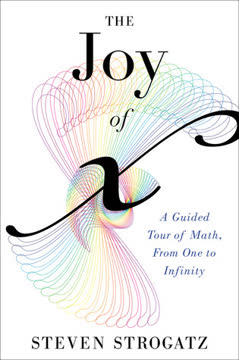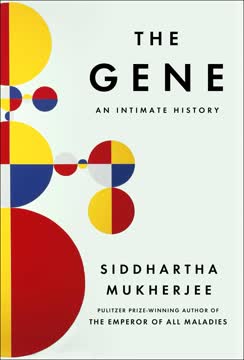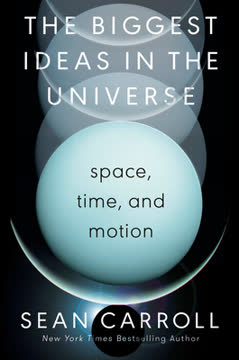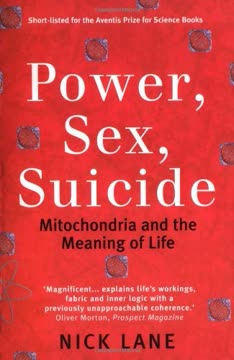つの重要なポイント
1. 酸素:私たちを支え、老化させる逆説的な分子
酸素は生命のエリクサーとして称賛されている—驚異のトニック、老化の治療、美容治療、そして強力な医療療法である。また、火災の危険性があり、最終的には私たちを殺す危険な毒とも言われている。
生命を与え、生命を奪う。 酸素は生命に不可欠であり、細胞呼吸を通じて複雑な生物が食物からエネルギーを抽出するのを可能にする。しかし、酸素は時間とともに細胞を損傷する反応性の高い分子でもある。この逆説は、老化と長寿を理解するための核心にある。
進化的適応。 地球上の生命は、酸素の力を利用しながらその危険を軽減するための多くのメカニズムを進化させてきた。これには以下が含まれる:
- スーパーオキシドジスムターゼやカタラーゼなどの抗酸化酵素
- 細胞内区画化(例:ミトコンドリア)
- DNA修復メカニズム
歴史的視点。 酸素の発見とその生命過程における役割は、ジョセフ・プリーストリーやアントワーヌ・ラヴォアジエなどの科学者たちによる科学史の重要な瞬間であった。酸素の二重性を理解することは、医学から宇宙探査に至るまでの分野で重要である。
2. フリーラジカル:細胞代謝の両刃の剣
フリーラジカルが生成されること、またはそれらが生成速度に比例して損傷を引き起こすことを知っている場合、フリーラジカル理論の問題は、相関関係が因果関係を示さないという点にある。
避けられない副産物。 フリーラジカルは、特にミトコンドリアでの細胞代謝の自然な結果として生成される。これらはDNA、タンパク質、脂質に損傷を与える可能性があるが、細胞シグナル伝達や免疫応答に重要な役割を果たす。
生活速度理論。 この理論は、代謝率が高い生物はフリーラジカルの生成が増加するため、より速く老化すると提案している。しかし、鳥やコウモリのような例外がこの単純な見方に挑戦している。
酸化ストレスと老化。 フリーラジカルの生成と抗酸化防御のバランスが重要である:
- 過剰なフリーラジカルは酸化ストレスを引き起こす
- 慢性的な酸化ストレスは老化や加齢関連疾患と関連している
- しかし、ある程度の酸化ストレスは適応応答を引き起こし、有益である可能性がある
3. 抗酸化物質:酸化ストレスに対する自然の防御
抗酸化サプリメントが最大寿命を延ばすという証拠はまだない。代わりに、バランスの取れた食事がビタミン欠乏を補正し、寿命を短くする可能性のある欠乏症を防ぐ可能性が高い。
複雑なネットワーク。 抗酸化物質は単なる栄養補助食品ではなく、フリーラジカルを中和し、酸化損傷を修復するために協力する分子や酵素の洗練されたシステムである。
食事性抗酸化物質と内因性抗酸化物質。 果物や野菜は重要な抗酸化物質を提供する一方で、体内でも以下のような抗酸化物質が生成される:
- グルタチオン
- コエンザイムQ10
- リポ酸
抗酸化パラドックス。 過剰な抗酸化サプリメントは有害である可能性がある:
- 有益な酸化ストレス応答を妨げる可能性がある
- 重要な細胞シグナル伝達経路を抑制する可能性がある
- 一部のケースでは癌リスクを増加させる可能性がある
4. ミトコンドリア:細胞の発電所と時間管理者
重要な点は、細菌の生存には大規模な死が伴うということである。24時間で、単一の細菌は248、または1016の細胞を生成し、総バイオマスは約30キログラムになる。明らかに、このような指数関数的な成長は持続不可能である。
進化的起源。 ミトコンドリアはかつて自由生活をしていた細菌であり、初期の真核細胞と共生関係を形成した。この内共生イベントは、複雑な生命の進化にとって重要であった。
エネルギーと老化。 ミトコンドリアは細胞のエネルギー生産と老化の中心である:
- 酸化的リン酸化を通じて細胞のATPの大部分を生成する
- フリーラジカルの主要な発生源である
- ミトコンドリアDNAは酸化損傷に特に脆弱である
ミトコンドリア老化理論。 この理論は、ミトコンドリアDNAやタンパク質の蓄積された損傷が細胞機能不全と老化を引き起こすと提案している。しかし、その関係は複雑で完全には理解されていない。
5. 長寿の進化:生殖と生存のバランス
老化が生命にとって必須でなく、常に存在していたわけではないならば、それは進化したと考えられる。老化が進化したのであれば、それは少なくとも部分的には遺伝子によって決定されているはずである。なぜなら、遺伝的に決定される特性だけが進化し、次世代に引き継がれることができるからである。
トレードオフ。 進化論は、長寿が生殖成功とバランスを取っていると提案している。生存と修復に割り当てられる資源は、生殖のコストとなる。
選択圧。 自然選択の力は年齢とともに減少し、晩年の特性に影響を与える遺伝子は生殖成功に対する影響が少ない。これにより、晩年に作用する有害な突然変異が蓄積する。
適応的老化。 一部の種では、プログラムされた死が有利である可能性がある:
- 子孫のためのスペースを確保する
- 資源の競争を減少させる
- 集団内の遺伝的多様性を維持する
6. カロリー制限:寿命延長の可能性の鍵
カロリー制限は生涯のエネルギー潜在力を増加させる—心拍数が増える。オスのラットでは、この増加は約50%である。
普遍的な効果。 カロリー制限は、酵母から霊長類に至るまで、広範な生物で寿命を延ばすことが示されており、保存されたメカニズムを示唆している。
代謝適応。 カロリー制限は多くの生理学的変化を引き起こす:
- 代謝率の低下
- 炎症の減少
- インスリン感受性の改善
- ストレス耐性の向上
ホルミシス。 カロリー制限の利点は、低レベルのストレスに対する有益な応答であり、より大きな挑戦に対処する能力を強化するホルミシスによるものである可能性がある。
7. 使い捨てソーマ理論:なぜ私たちは老化し、死ぬのか
使い捨てソーマ理論は、長寿が生殖に割り当てられる資源と身体の維持に割り当てられる資源のトレードオフであると主張している。
資源配分。 この理論は、生物が限られた資源を身体(ソーマ)の維持と生殖の間で配分することを提案している。最適なバランスは環境要因と進化の歴史に依存する。
進化的視点。 この理論は以下を説明する:
- 野生で高い死亡率を持つ種は、より速く老化する傾向がある
- 長寿の種は、性的成熟が遅く、繁殖率が低いことが多い
人間の老化への影響。 このトレードオフを理解することで、以下のような介入が可能になるかもしれない:
- 身体の維持を改善することで健康寿命を延ばす
- 資源配分をシフトすることで寿命を延ばす可能性がある
8. DNA損傷と修復:細胞内の絶え間ない戦い
以下の結論に至る。老化が生命にとって必須でなく、常に存在していたわけではないならば、それは進化したと考えられる。
継続的な脅威。 DNAは内因性(例:フリーラジカル)および外因性(例:紫外線)からの攻撃を常に受けている。この損傷が修復されない場合、突然変異、細胞機能不全、老化を引き起こす可能性がある。
修復メカニズム。 細胞は高度なDNA修復システムを進化させてきた:
- 塩基除去修復
- ヌクレオチド除去修復
- 二重鎖切断修復
- ミスマッチ修復
老化と修復。 DNA修復メカニズムの効率は年齢とともに低下し、ゲノムの不安定性と加齢関連疾患に寄与する。これらの修復システムを強化することで、老化を遅らせる可能性がある。
9. テロメアと細胞老化:若返りの泉ではない
要するに、テロメラーゼが永遠の命の秘密を持っているという騒ぎにもかかわらず、それは公平に言っても過言ではない。
細胞の時計。 染色体の末端にある保護キャップであるテロメアは、細胞分裂ごとに短くなる。この短縮は細胞の時計として機能し、細胞が分裂できる回数を制限する。
複製老化。 テロメアが臨界的に短くなると、細胞は老化状態またはプログラムされた細胞死に入る。このメカニズムは癌を防ぐのに役立つが、老化にも寄与する。
テロメラーゼと不死。 テロメラーゼはテロメアを延長し、細胞の寿命を延ばすことができるが:
- それは老化の単純な解決策ではない
- 体内の多くの細胞は分裂せず、テロメアの長さに制限されない
- テロメラーゼの活性化は癌リスクを増加させる可能性がある
10. 老化における性差:ホルモンと代謝の役割
トム・カークウッドとスティーブン・オースタッドが主張しているように、この効果の力は閉経の存在によって例示されている。
進化的視点。 男性と女性の異なる生殖戦略は、老化パターンの違いをもたらした:
- 女性はしばしば長寿であるが、急激な生殖能力の低下(閉経)を経験する
- 男性は生殖能力を長く維持するが、寿命が短いことが多い
ホルモンの影響。 性ホルモンは老化に重要な役割を果たす:
- エストロゲンは心血管系と骨密度に保護効果がある
- テストステロンは筋肉量と骨密度に影響を与える
代謝の違い。 性別特有の代謝特性が老化に影響を与える:
- 女性は一般的に代謝率が低く、フリーラジカルの生成が少ない
- 男性はしばしば筋肉量が多く、全体的な代謝と老化に影響を与える
これらの違いは、老化過程における遺伝、ホルモン、環境の複雑な相互作用を強調しており、長寿研究と介入において性別特有のアプローチの必要性を示している。
最終更新日:
FAQ
What's Oxygen: The Molecule That Made the World about?
- Exploration of Oxygen's Role: The book examines oxygen's dual nature as essential for life and a contributor to death, shaping life on Earth over billions of years.
- Historical Context: Nick Lane provides a narrative tracing the discovery of oxygen and its implications, from early microbial life to complex organisms.
- Interconnection of Life and Oxygen: It connects various scientific disciplines, showing how oxygen influences energy production, health, disease, and aging.
Why should I read Oxygen: The Molecule That Made the World?
- Engaging Scientific Writing: Lane's writing is praised for making complex topics accessible and engaging for a general audience.
- Interdisciplinary Insights: The book bridges biology, chemistry, and geology, offering a comprehensive understanding of oxygen's impact on life.
- Relevance to Modern Issues: It addresses contemporary concerns about health, aging, and environmental issues, making it relevant to science enthusiasts.
What are the key takeaways of Oxygen: The Molecule That Made the World?
- Oxygen as a Double-Edged Sword: While vital for life, oxygen also poses risks, contributing to aging and diseases.
- Evolutionary Significance: The rise of atmospheric oxygen was crucial for the evolution of complex life forms, including the Cambrian explosion.
- Antioxidants and Health: The book challenges the notion that consuming antioxidants can significantly extend life, emphasizing a balanced approach.
What are the best quotes from Oxygen: The Molecule That Made the World and what do they mean?
- “Oxygen, an essential element of life, is also an agent of death.”: This highlights the paradox of oxygen's role in sustaining and threatening life.
- “The poison is in the dose.”: Illustrates that while oxygen is necessary, excessive exposure can lead to toxicity and damage.
- “Life, Death and Oxygen: Lessons From Evolution on the Future of Ageing.”: Suggests that understanding oxygen's historical role can provide insights into health and aging.
How did the discovery of oxygen impact our understanding of life?
- Historical Controversy: The book discusses the contentious history of oxygen's discovery, involving figures like Joseph Priestley and Antoine Lavoisier.
- Shift in Scientific Paradigms: Realizing oxygen's role in combustion and respiration transformed scientific thought and understanding of metabolism.
- Foundation for Modern Biology: Lane argues that the discovery laid the groundwork for modern biology, influencing evolutionary theories.
What is the free radical theory of aging mentioned in Oxygen: The Molecule That Made the World?
- Oxidative Damage: The theory posits that free radicals, reactive forms of oxygen, cause cellular damage over time, leading to aging.
- Role of Antioxidants: Antioxidants can neutralize free radicals, but excessive supplementation may not significantly extend lifespan.
- Implications for Health: Understanding this theory can inform lifestyle choices related to diet and health, emphasizing balance.
How does Oxygen: The Molecule That Made the World connect oxygen to evolution?
- Oxygen and Multicellularity: Rising oxygen levels were crucial for the evolution of multicellular organisms, enabling complex life forms.
- Cambrian Explosion: Lane links increased atmospheric oxygen to the Cambrian explosion, marked by rapid life diversification.
- Environmental Changes: Geological events, like snowball Earth, influenced oxygen levels and evolutionary pathways.
What evidence does Lane provide for high oxygen levels during the Carboniferous period?
- Fossil Record: The abundance of fossilized giant insects, like the Bolsover dragonfly, suggests higher oxygen levels supported larger body sizes.
- Coal Formation: Massive burial of organic matter as coal during the Carboniferous contributed to elevated oxygen levels.
- Isotope Analysis: Studies of carbon and strontium isotopes indicate fluctuations in oxygen levels, supporting a high-oxygen atmosphere.
How does Oxygen: The Molecule That Made the World address the paradox of oxygen being both essential and toxic?
- Oxygen's Dual Nature: Oxygen is necessary for life processes but can lead to oxidative stress and cellular damage.
- Historical Context: Early life forms adapted to oxygen, developing mechanisms to cope with its toxic effects.
- Modern Implications: Understanding this paradox can inform health practices and antioxidant use in diets.
What role do antioxidants play according to Oxygen: The Molecule That Made the World?
- Defense Against Free Radicals: Antioxidants neutralize free radicals, reducing oxidative damage to cells.
- Dietary Sources: Consuming fruits and vegetables rich in antioxidants is emphasized for overall health.
- Caution Against Over-Supplementation: Excessive antioxidant supplementation may not provide expected benefits and could be harmful.
How does Oxygen: The Molecule That Made the World relate to current environmental issues?
- Impact of Oxygen Levels: Fluctuations in atmospheric oxygen levels can affect ecosystems and biodiversity.
- Human Influence: Human activities alter oxygen levels, with potential health and environmental consequences.
- Call for Awareness: Lane encourages considering oxygen's historical significance and preserving the environment for future generations.
What is the mitochondrial theory of ageing as discussed in Oxygen: The Molecule That Made the World?
- Mitochondrial Damage: Damage to mitochondrial DNA from free radicals leads to a decline in function, contributing to aging.
- Free Radical Leakage: Mitochondria produce energy but leak free radicals, causing cellular damage and accelerating aging.
- Implications for Longevity: Improving mitochondrial efficiency could extend lifespan and reduce age-related diseases.
レビュー
本書『Oxygen』は、地球の歴史と生物学における酸素の役割を包括的に探求したものである。読者は、地質学から生化学に至るまで多岐にわたる科学分野を統合したレーンの手法を高く評価している。本書は、酸素が進化、老化、病気に与える影響を取り上げている。一部の読者には難解と感じられることもあるが、その深さと魅力的な文章が称賛されている。批評家は、推測的な要素や過度な単純化の可能性を指摘している。抗酸化物質、ミトコンドリア、老化理論に関する議論が特に注目されている。総じて、科学や生物学に興味がある人々にとって、情報豊かで考えさせられる一冊とされている。













